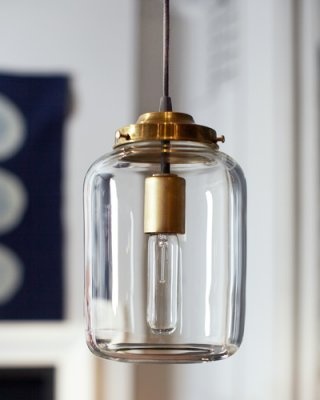
Light bulbs were once a topic that were quite simple, but lately, choosing the right bulbs has become almost overwhelming. Save energy and frustration with this brief tutorial on bulbs.
For residential lighting, there are three major types of light bulbs: incandescent, fluorescent, and LED.
LED Lighting
Lasting up to 40 times longer than incandescent bulbs, light-emitting diode (LED) bulbs are eco-friendly and energy efficient.. With no mercury vapor, no harmful UV rays, and no headache causing flickering, LED bulbs eliminate the issues of compact fluorescent bulbs and last longer. We started using them in recessed lighting applications where changing a bulb is a major event, such as with vaulted ceilings. We simply swapped out incandescent bulbs with LED bulbs once, and never had to change burned out bulbs again. That got our attention! Also, the initial cost of quality LED bulbs pay for themselves over time because they last for years. Here’s what you’ll need to know to make the switch to the right LED bulbs for your home.

What’s Lumen? It’s simply a description of the brightness of a bulb. We used to think in “watts” and now it’s “lumens.” LED technology saves such an incredible amount of energy that it’s worth thinking in this new way. This chart will help you find the LED bulb that’s similar in brightness for which you’re looking.
What’s Kelvin? It’s a scale that measures the color of the light provided by the bulb. Most people prefer 2700K (warm light like an incandescent lightbulb) or 3000K (whiter light like daylight). Keeping your Kelvins consistent makes your rooms look better, and to make it frustrating, Kelvin can vary by manufacturer. Grocery store bulbs often vary wildly so we’ve got the solution:
Choose Satco bulbs from Madison Lighting
- consistent color and brightness
- look like incandescent bulbs
- many are compatible with dimmers
- cost is similar to lower quality bulbs
Converting Watts to Lumens
| Incandescent Watts | LED Lumens |
| 100W | 1600 |
| 75W | 1100 |
| 60W | 800 |
| 40W | 450 |
| Warm White | Cool White | Natural / Daylight |
| Soft White | Neutral White | Think Noon’s Daylight |
| 2700-3000K | 3500-4100K | 5000-6500k |
Incandescent Bulbs
We’ll start here because we’ve all bought them. You may know the Energy Independence and Security Act (EISA) of 2007 sets performance standards for all light bulbs. It does not ban incandescent bulbs; rather, it sets minimum efficiency levels that have forced them to be re-designed, and so their packaging has been updated. If you’ve bought bulbs in the past couple of years, then you’ve seen the change. The deadlines and goals for the phased-in requirements are:
- On January 1, 2012, light bulbs as bright as a 100-watt traditional incandescent bulb could use no more than 72 watts of electricity.
- On January 1, 2013, bulbs as bright as a current 75-watt incandescent could not use more than 53 watts.
- On January 1, 2014, the standard was applied to 60-watt bulbs, which cannot use more than 43 watts, and 40-watt bulbs cannot use more than 29 watts.
- Light bulbs under 40 watts, three-way bulbs, appliance bulbs, and a few other specialty types are exempt.
- By 2020, a 200% increase in efficiency is required for all light bulbs!
The Hybrid
To meet this challenge, manufacturers have essentially developed a hybrid halogen/incandescent bulb that will have all the outward appearances of our old standbys. The comparable stats can be seen in the table to the right.
We’ll let you draw your own conclusions about the cost effectiveness of the new requirements.
| Standard Incandescent | Halogen / Incandescent | |
| Energy Used (in watts) | 100 | 72 |
| Light Output (in lumens) | 1150 | 1490 |
| Life Expectancy (in hours) | 2500 | 1000 |
| Price | $0.60 | $1.60 |
Compact Fluorescent Bulbs
In offices and stores across America, we work and live under fluorescent lighting. Known originally for their exceptionally long life, low energy usage, annoying buzzing, and migraine-inducing flickering, compact fluorescents (CFLs) have improved dramatically over the years. Using a little more electricity when they are turned on, they take about 75% less energy than incandescent bulbs once the electricity gets moving through them. It takes anywhere from 30 seconds to three minutes to kickstart a CFL, and that is why they become brighter during those first few minutes.
CFLs now come in an array of warm and cool white light so you can find a type that fits your needs. How do you choose the right light? Light color is measured on the Kelvin scale (K). Lower numbers mean the light appears yellowish and higher numbers mean the light appears white and even blue.
CFL ballasts have improved with the use of electronic ballasts and no longer make that buzzing sound. Maximize the life of the bulbs by using them where the lights are used often — exterior home lighting is a great use for CFL bulbs. With enclosed exterior lighting fixtures, left on for security, the bulbs burn inexpensively for months and even years. Remember to recycle these bulbs, since they contain mercury, which can be harmful to the environment.

Reading The Label
Now we’re back to the new packaging you’ve noticed. The U.S. Federal Trade Commission now requires manufacturers to clearly label the front of their package with the bulb’s brightness in lumens. The back of each package has a “Lighting Facts” label modeled after the “Nutrition Facts” label that you find on food packages. The Lighting Facts label provides information about:
- Brightness
- Energy cost
- Life expectancy
- Light appearance (for example, “warm” or “cool”)
- Wattage
- Mercury content

Read More
There are some excellent resources to help you learn how to compare light bulbs.
Earth Easy Light Bulb Comparison Chart
Federal Trade Commision - Consumer Information About Light Bulbs
